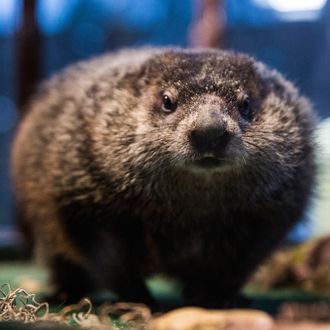
New York City will probably hit 70 degrees Wednesday afternoon, which will come close to, if not break, the previous record. These May-like highs on the first day of March are part of a historic warm spell across a huge swath of the northern hemisphere.
But the bigger story here is climate change, say government scientists. Spring is arriving earlier — literally, or more accurately, phenologically. The U.S. Geological Survey says the season is showing up two to three weeks earlier than normal in the southeast United States, from Texas to Washington, and making its way gradually north. The agency measures this based on when nature wakes up and says, “it’s time,” which scientists track, in part, by monitoring the blooming and leafing dates for certain plants, and comparing that data to historic averages. Spring already arrived in the southeastern United States. It started 22 days early in Washington, D.C., where the cherry blossoms are expected to hit their peak bloom about two weeks early, around March 15. If that prediction is accurate, it will tie a record, set in 1990.
So that unusually hot February is really just a pleasant moment in a pattern that will likely feel much less agreeable in, say, August 2050. “While these earlier springs might not seem like a big deal — and who among us doesn’t appreciate a balmy day or a break in dreary winter weather — it poses significant challenges for planning and managing important issues that affect our economy and our society,” explained Dr. Jake Weltzin, a USGS ecologist and the executive director of the USA National Phenology Network, in a release about these maps. It complicates growing season for farmers. It is very bad for allergy sufferers. It throws ecosystems severely out of whack, as the Atlantic explains:
These kinds of mismatches can upset complex relationships between animals and their environment. In the Arctic, some grasses bloom a month before normal, depriving hibernating animals of a crucial early-spring food source. Snowshoe hares turn white during the winter, and then brown during the summer, so that they can be better camouflaged against the ground. But now that snow is melting earlier in the year, many are still wearing their white coats in the spring mud—making them especially easy for predators to pick off.
It’s hard to say what causes a given weather event, but spring’s party-crashing this year is exactly the kind of thing that happens on a warming planet. Or, as the U.S. Geological Survey says (for now), “climate change is variably advancing the onset of spring across the United States.”
But, at least this time, weird spring weather won’t last in New York. Temperatures are going to plummet into the 30s by Friday, and with them may come just enough snow to temporarily distract from all the doomsday scenarios.





























